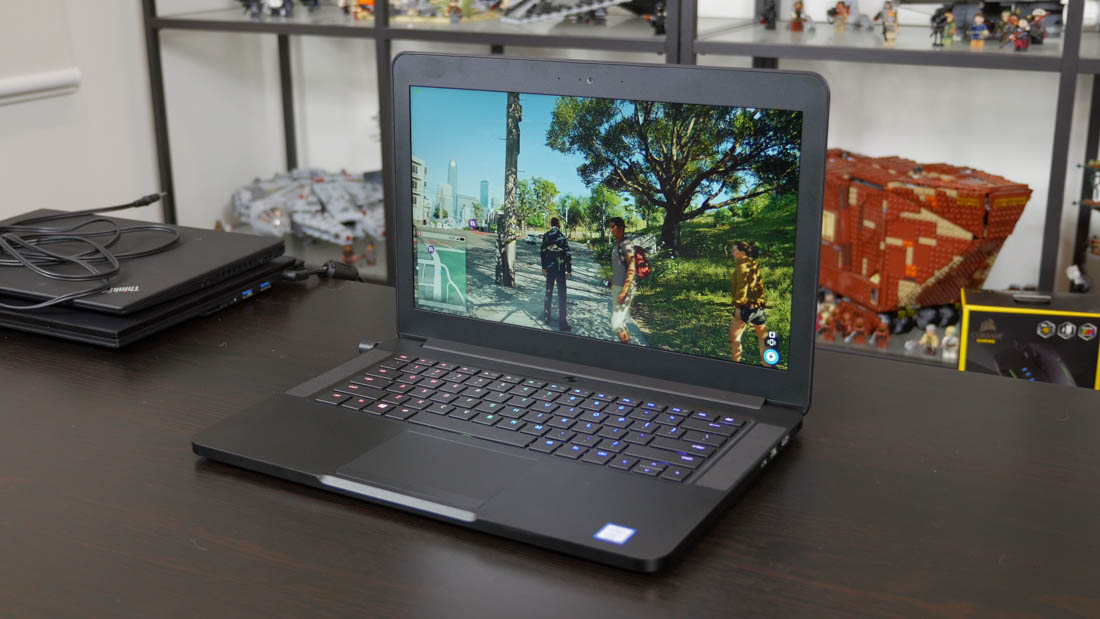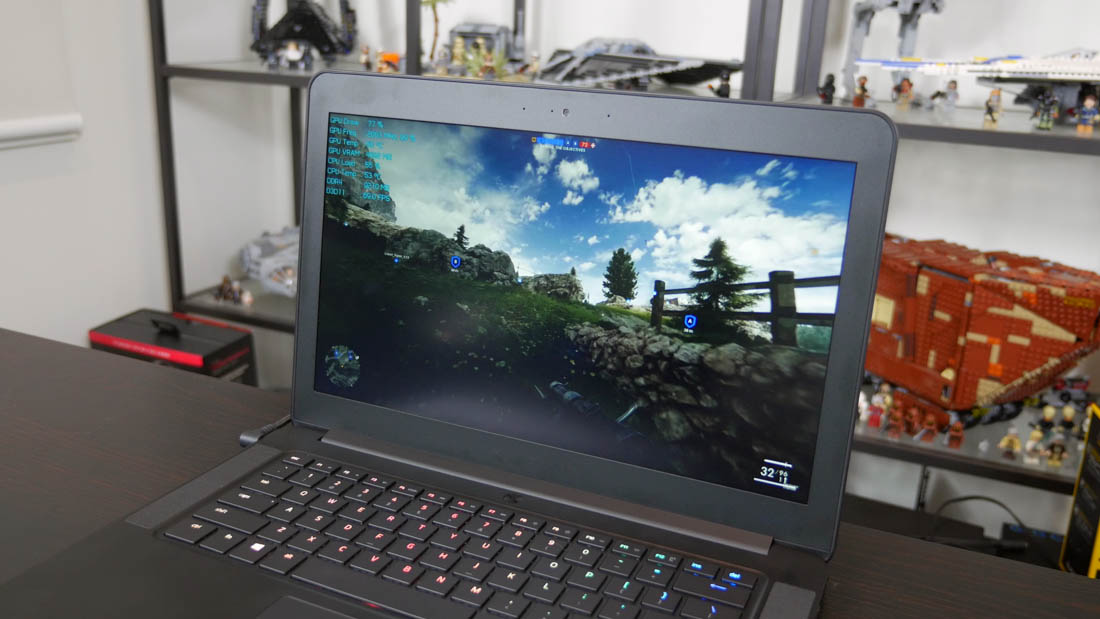I'm a big fan of Razer hardware. Their peripherals are top notch, in particular their outstanding Deathadder mice, while their laptops have surprised me in terms of how solid and well built they are. Razer seems to know what gamers are after and the latest Razer Blade is no exception.
It's a powerful gaming machine, with a Kaby Lake Core i7 and GeForce GTX 1060 graphics giving you enough grunt for the latest games. But you get this hardware in a beautiful metal unibody chassis: a phrase I wouldn't use to describe many other gaming laptops on the market.
Granted, the Razer Blade is an expensive laptop, at over $2,000 for a usable configuration, though in many ways you get what you pay for.
The build quality of the Razer Blade is exquisite, making it the most attractive gaming laptop you can buy. Almost every corner of this laptop is constructed of black aluminum, which is sleek, minimalist and sexy. The base is essentially a unibody construction, with aluminum curving seamlessly around the edges, although the bottom plate can be removed to reveal the internals. The matte finish makes this device look expensive, and its texture doesn't disappoint either.
One thing I strongly dislike about most PC gaming products is their use of unnecessary 'gamer' elements, like weird angles and awful patterns. You get none of that with the Razer Blade. The only aspect to this laptop that could even potentially be described as 'gamer' is the acid green Razer logo on the laptop lid. Aside from that, this device looks like a typical everyday laptop, and that's great.
Another advantage to Razer's design is its compact nature. The Blade tips the scales at 1.86kg/4.1lbs (1.95kg for the touchscreen model) with a thickness of 17.9mm, making it one of the thinnest and lightest laptops in its class. Some competing 14-inch laptops from Gigabyte and MSI have tried to hit the same marks, and while the MSI GS43VR is lighter, it's not as slim and its build quality is a mile behind what Razer offers in the Blade.
The Blade compares favorably against current generation 15-inch MacBook Pros (1.83kg heavy and 15.5mm thick), so despite its primary focus on gaming, the Blade can easily be transported and used as a portable workstation without much fuss.
In fact, the Blade is a fair bit more powerful than the latest MacBook Pros thanks to its GTX 1060 graphics. The combination of performance and portability is why the Razer Blade line has been so popular, and it's currently the standout option in this regard.
You won't have to worry about lugging around a massive power brick with the Razer Blade. Razer's current-generation 165W power supply for this laptop is remarkably compact and weighs just over 300 grams, so it's not a burden like many other gaming laptop power bricks.
The Blade includes a near perfect range of I/O: on the left are two USB 3.0 Type-A ports, complemented by a third port on the right side; also on the right is a HDMI 2.0 port and a Thunderbolt 3 USB-C port, while a 3.5mm audio jack is on the left. It's a great mix of current and emerging interconnect technologies, and the full-sized display output makes it easy to connect external displays on the go. The main omission here is Ethernet, although clearly this laptop is too thin to fit an RJ45 jack.
I was impressed with the speaker system, which is a rarity for any laptop. The Blade isn't loud, though its speakers are surprisingly decent quality, with a level of depth in the mid-tones and bass that you don't normally get. To be clear, headphones or external speakers will still give a far better audio experience, but for the occasional video or song, the Razer Blade isn't awful.
My one major gripe about the design of the Blade is its massive bezels around the 14-inch display. There is clearly enough room here to include a larger display, something in the 15-inch range, however Razer haven't bothered to do so. Considering how portable the chassis of the laptop is, it'd look even better with a larger screen in the same form factor.
Speaking of the display, my review unit was equipped with the 14.0-inch IPS LCD non-touch model with a resolution of 1920 x 1080. There's also a 4K model available, which packs a touchscreen. Considering this laptop includes just a GTX 1060 inside, for the best gaming experience, it's worth sticking with 1080p, although you could simply run the 4K model at 1080p if you desire.
My main issue with the Blade's display is its color performance. Before calibration, this display is tinted noticeably green, which leads to poor accuracy. A greyscale dE2000 average of 7.6 is particularly bad, as is a saturation average of 4.43 and a ColorChecker average of 5.476. Ideally you'd want all three values below 2.0 (or below 1.0 for professionals) to achieve the best experience.
The good news is that this IPS display produces a decent contrast ratio of 1270:1, and there was no noticeable backlight bleed from my review unit. Brightness was respectable, at 320 nits peak, as were viewing angles. When calibrated, the Razer Blade performed well, hitting a greyscale dE2000 average below 1.0. However, as the display is coming from a fair way back, I couldn't achieve a dE2000 value under 1.0 in SpectraCal CALMAN 5's color tests.
Razer has included a decent keyboard on the Blade, similar in travel distance to most modern ultrabooks. The actuation force required for each key is lower than you'd normally find from a laptop keyboard, making it more geared towards gaming than typing, though the typing experience is solid nonetheless due to a reasonably sharp response. Keys are adequately sized, especially the important left modifiers, although the up/down arrows are bit squished on the right side.
This wouldn't be a Razer product without RGB lighting, so of course the Blade comes with individually-customizable RGB LEDs behind each key. The functionality provided here is identical to Razer's desktop keyboards, with RGB controls provided by Razer Synapse. The lighting is highly customizable, and pretty much any color looks fantastic up against the deep black chassis. I was disappointed to find that symbols and secondary key functions are not backlit, so it can be tricky to find which keys are for brightness, which are for punctuation, and so forth when in a dark room.
The trackpad on the Blade is excellent, providing a responsive experience with perfect gesture recognition. The physical keys located along the bottom edge are even and clicky, which enhances the trackpad's usability. Of course, I still expect gamers to use an external mouse, but the trackpad is perfect for work on the go.







